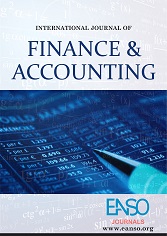The Introduction of a BRICS Currency and Its Impact on the International Financial Architecture
Abstract
The idea of a joint BRICS currency emerges from a growing tension within the global financial order. The dominance of the US dollar is no longer perceived as neutral but as an instrument of structural power. Within this environment, BRICS member states seek to expand their autonomy. Their monetary initiative is not limited to questions of transaction cost or technical efficiency. It reflects a broader dissatisfaction with existing financial hierarchies and signals a desire to reshape the terms of international exchange. The proposal carries symbolic weight. It challenges existing narratives and introduces an alternative vocabulary of economic sovereignty. This study analyses the structural and political conditions under which such a currency might develop. Methodologically, it is based on a qualitative document analysis of publicly accessible policy papers, declarations, and expert publications. The underlying question is not whether a currency will be implemented, but how its possibility alters the imagination of monetary order. This study analyses the structural and political conditions under which such a currency might develop. It explores institutional asymmetries, conflicting policy priorities, and limitations in trust and governance. Rather than assuming linear progression, the analysis considers friction, inconsistency, and competing expectations among BRICS members. Pilot projects and institutional frameworks are examined, not as functional endpoints, but as provisional experiments. The underlying question is not whether a currency will be implemented, but how its possibility alters the imagination of monetary order. Findings suggest that the initiative, even in its early form, already alters expectations within the international system. Its operational viability remains uncertain. Yet its political resonance extends beyond technical feasibility. What is at stake is not only who controls money, but who defines its meaning and function within a contested multipolar world.
Downloads
References
Arner, D. W., Auer, R., & Frost, J. (2020). Stablecoins: risks, potential and regulation. Bank for International Settlements Working Papers, No. 905. https://www.bis.org/publ/work905.htm
BRICS Information Portal. (2023). BRICS Pay pilot project: Structure and objectives. https://infobrics.org
Bassiouni, M. C. (2019). Introduction to International Criminal Law (2nd ed.). Brill.
Bowen, G. A. (2009). Document analysis as a qualitative research method. Qualitative Research Journal, 9(2), 27-40. https://doi.org/10.3316/QRJ0902027
De Grauwe, P. (2016). Economics of Monetary Union (11th ed.). Oxford University Press.
Eichengreen, B. (2011). Exorbitant Privilege: The Rise and Fall of the Dollar and the Future of the International Monetary System. Oxford University Press.
Fairclough, N. (2013). Critical discourse analysis: The critical study of language (2nd ed.). Routledge.
Ferrero, A. (2020). Regional monetary cooperation in Latin America: Past efforts and future prospects. Latin American Policy, 11(1), 57-74. https://doi.org/10.1111/lamp.12185
Freedom House. (2023). Freedom in the World 2023: Global expansion of authoritarian rule. https://freedomhouse.org/report/freedom-world/2023/global-expansion-authoritarian-rule
Gramsci, A. (1971). Selections from the Prison Notebooks. International Publishers.
Helleiner, E. (2021). The return of monetary nationalism. Review of International Political Economy, 28(2), 294- 316. https://doi.org/10.1080/09692290.2020.1830831
Humphrey, C. (2015). Developmental revolution or Bretton Woods revisited? The prospect of the New Development Bank. ODI Working Paper 418. https://odi.org/en/publications/developmental-revolution-or-bretton-woods-revisited
International Monetary Fund. (2023). Currency Composition of Official Foreign Exchange Reserves (COFER). https://data.imf.org/?sk=E6A5F467-C14B-4AA8-9F6D-5A09EC4E62A4
Kindleberger, C. P. (1973). The World in Depression, 1929-1939, University of California Press.
Masson, P. R. (2008). Currency unions in Africa: Is the trade effect substantial enough to justify their formation? The World Economy, 31(4), 533-547. https://doi.org/10.1111/j.1467-9701.2008.01094.x
Mayring, P. (2015). Qualitative Content Analysis: Basics and Techniques (12th ed.). Beltz.
Mundell, R. A. (1961). A theory of optimum currency areas. The American Economic Review, 51(4), 657-665.
Ocampo, J. A. (2022). Resetting the International Monetary (Non)System (2nd ed.). Oxford University Press.
OECD Economic Surveys: South Africa 2023.
https://www.oecd.org/en/publications/oecd-economic-surveys-south-africa_2218614x.html
People's Bank of China. (2022). Progress of research and development of E-CNY in China. http://www.pbc.gov.cn/en/3688110/3688172/4157443/index.html
Rapley, T. (2007). Doing Conversation, Discourse and Document Analysis. Sage.
Schubert, G., & Ahlers, A. L. (2020). China's political system (3rd ed.). Routledge.
Shirov, A., Yantovskiy, A., & Potapenko, V. (2023). Gold-backed currencies and alternatives to dollar-based trade. Journal of the New Economic Association, 59(3), 112-130. https://doi.org/10.31737/2221-2264-2023-59-3-7
Stiglitz, J. E. (2016). The Euro: How a Common Currency Threatens the Future of Europe. W. W. Norton & Company.
Sylla, N. S. (2019). The CFA Franc: French monetary imperialism in Africa. Review of African Political Economy, 46(160), 729-748. https://doi.org/10.1080/03056244.2019.1619991
Wilson, J. D. (2022). BRICS and the international order: Progress, problems and prospects. International Affairs, 98(2), 423-440. https://doi.org/10.1093/ia/iiab262
World Bank. (2023). World Development Indicators. https://databank.worldbank.org/source/world-development-indicators
Yadav, Y. (2021). India's federal democracy: Institutions and discontents. In T. Tillin (Ed.), Indian Federalism (pp. 35-52). Oxford University Press.
Copyright (c) 2025 Enrico Moch, PhD

This work is licensed under a Creative Commons Attribution 4.0 International License.




























